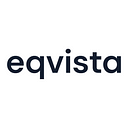Rules for Intangible Asset Valuation
Intangible assets are properties that do not exhibit physical properties but attribute legal or competitive rights to the owners. If you consider the IGBVT (International Glossary of Business Valuation, the definition of intangible assets is “non-physical assets such as franchises, trademarks, patents, copyrights, goodwill, equities, mineral rights, securities and contracts that grant rights and privileges and have value for the owner.” An intangible asset should lead to potential benefits to the entity and should be measured with the help of available resources.
There are five categories of intangible assets as Marketing related (trademarks, internet domain names, noncompetition agreements, etc.) Customer-related (customer contracts and customer relationships), artistic (plays, books, music, photographs, etc.), contract-related (lease agreements, operating rights, license, etc.), and technology-related (databases, trade secrets and patented software) assets. This article explains different approaches and methodologies used to value intangible assets.
What is Intangible Asset Valuation?
Intangible assets need a valuation to identify their volatility, issues faced in protecting them, and taxability. Also, it is crucial to understand what a potential buyer should offer in exchange for these assets, what purpose these assets shall serve in the long run, and the income they would generate in their operation. So, when an intangible asset valuation is set to happen, one must consider the history of the asset, the operator, the pricing information according to the competition in the market, and the cost and treatment of comparative assets.
Valuation Approaches
Intangible assets are unique; therefore, a single valuation approach does not apply to them. There are three standard approaches to choosing an ideal method of valuation. Intangible assets are often considered more difficult to value than tangible ones. However, one or more of the following approaches can help arrive at an approximate market value.
Income approach
When cash flow generation is possible from an intangible asset, valuation experts can use income-based models. It converts amounts generated in the future into a single amount. For example, an expected flow of income in the future is considered as an aggregate amount value in the form of an asset. Similarly, such anticipated costs in the future are subject to adjustments according to expenses and assumed to the current value. The discounted cash flow (DCF), multi-period excess earnings, Relief from Royalty, and Incremental Cash flow methods fall under this valuation approach.
Market Approach
This approach gathers and considers information regarding competitive intangible assets in the market. Identical assets of businesses in the market are valued based on their sales and licenses. The comparable transactions method is an effective valuation method that uses this approach.
Cost Approach
This valuation approach reveals the current amount needed to replace or reproduce the asset capacity. This method is usually employed when the other two approaches do not apply, especially in intangible assets representing software and technology. The replacement cost method is an example of a valuation method under this approach.
Valuation methods
The following are the five most common methods of intangible asset valuation. These are based on either of the three approaches used in valuation. Considering the attributes of the intangible asset in question, one can understand which of these methods is appropriate.
Relief from Royalty method — In this method, the assumption on a hypothetical royalty payment is made, and the amount saved by owning the asset is calculated as the asset value. It has features of both market and income approaches. It is essential to spot similar intangible assets and their possible royalty rates to arrive at a definite value.
Replacement cost method — This scenario considers an exact replication of the intangible asset and assumes the cost required to create a similar asset with identical usage. Nonmarketable software and assembled workforce can be valued using this method.
Multi-Period Excess Earnings method — This method considers the cash flows involved with an asset separately from the intangible asset and adjusts them to the current market value. These models are apt for customer-based assets.
Incremental Cash Flow method — This method considers cash flows in two scenarios — with the intangible asset and without the Intangible Asset. The difference between the two offers an incremental value. It is especially useful in valuing non-compete agreements.
Real Options Pricing — Here, intangible assets that may not have significant cash flow generation but have the potential to generate revenue are valued with the help of option pricing models.
Things to consider during a valuation
Firstly, it is important to identify the objective behind the valuation of assets. Have clarity on the nature of the assets. Securing all kinds of information about intangible assets, the owner, and the market conditions is crucial. What kind of economic and intellectual benefits do these assets bring to the table? It is then recommended to test and implement the different valuation methodologies and approaches to identify what applies better to the asset in line for valuation. The final valuation methodology shall help you arrive at a fair market value.
Conclusion
The role of a valuation analyst is crucial in determining the valuation process of intangible assets. Eqvista offers your business a range of valuation services with regular notifications and updates. If you want to know more about how your intangible assets can be valued at a fair market price, please contact us for a free consultation.
